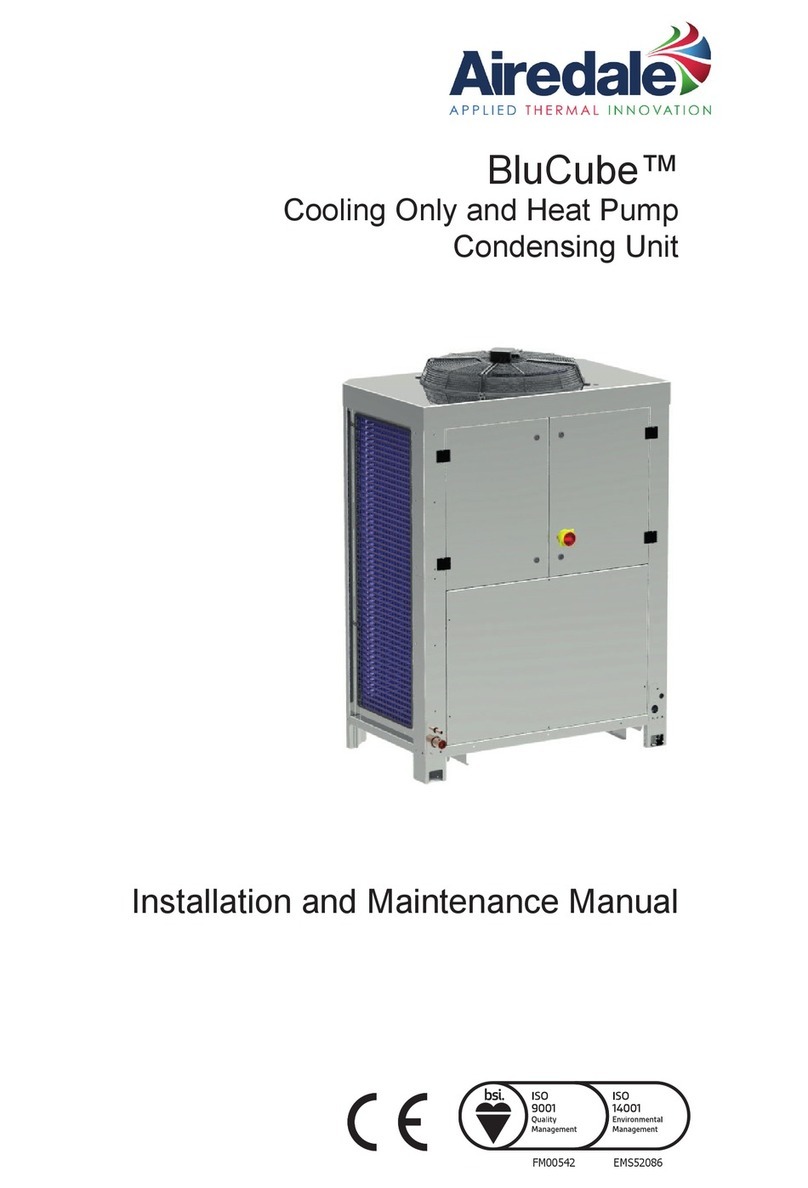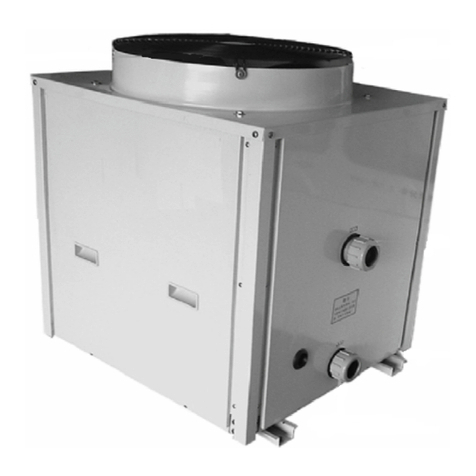
,CAUTION
Required Equipment
You will need the following equipment in order to flush the
existing line set and indoor coil: two clean R22 recovery
bottles, an oilless recovery machine with a pump down fea-
ture, and two sets of gauges (one for use with R22 and one
for use with the R407C).
Flushing Procedure
1 - Remove existing R22 refrigerant using the appropri-
ate procedure below.
If the existing outdoor unit is not equipped with
shut-off valves, or if the unit is not operational
AND you plan to use the existing R22 refrigerant to
flush the system -- Disconnect all power to the exist-
ing outdoor unit. Connect the existing unit, a clean re-
covery cylinder and the recovery machine according
to the instructions provided with the recovery ma-
chine. Remove all R22 refrigerant from the existing
system. Refer to gauges after shutdown to confirm
that the entire system is completely void of refrigerant.
Disconnect the liquid and suction lines from the exist-
ing outdoor unit.
If the existing outdoor unit is equipped with manu-
al shut-off valves AND you plan to use NEW R22
refrigerant to flush the system -- Start the existing
R22 system in the cooling mode and close the liquid
line valve. Pump all of the existing R22 refrigerant
back into the outdoor unit. (It may be necessary to by-
pass the low pressure switches to ensure complete re-
frigerant evacuation.) When the low side system pres-
sures reach 0 psig, close the suction line valve. Dis-
connect all power to the existing outdoor unit. Refer to
gauges after shutdown to confirm that the valves are
not allowing refrigerant to flow back into the low side d
the system. Disconnect the liquid and vapor lines from
the existing outdoor unit.
2 - Remove the existing outdoor unit. Set the new R407C
unit and follow the brazing connection procedure
which begins on the previous page to make line set
connections, DO NOT install provided R407C ex-
pansion valve at this time.
Make low voltage and line voltage connections to the
new outdoor unit. DO NOT turn on power to the unit
or open the outdoor unit service valves at this
time.
3 - Remove the existing refrigerant flow control orifice or
thermal expansion valve before continuing with flush-
ing procedures. The existing devices are not approved
for use with R407C refrigerant and may prevent prop-
er flushing. Use a field-provided fitting to reconnect the
lines.
,IMPORTANT
4 - Remove the pressure tap valve cores from the HS40
unit's service valves. Connect an R22 cylinder with
clean refrigerant to the suction service valve. Con-
nect the R22 gauge set to the liquid line valve and
connect a recovery machine with an empty recovery
tank to the gauge set.
5 - Set the recovery machine for liquid recovery and start
the recovery machine. Open the gauge set valves to
allow the recovery machine to pull a vacuum on the ex-
isting system line set and indoor coil.
6 - Invert the cylinder of clean R22 and open its valve to
allow liquid refrigerant to flow into the system through
the suction line valve. Allow the refrigerant to pass
from the cylinder and through the line set and the in-
door coil before it enters the recovery machine.
7 - After all of the liquid refrigerant has been recovered,
switch the recovery machine to vapor recovery so that
all of the R22 vapor is recovered. All the recovery ma-
chine to pull a vacuum on the system.
NOTE -A single system flush should remove all of the
mineral oil from the existing refrigerant lines and in-
door coil. A second flushing may be done (using clean
refrigerant) if insufficient amounts of mineral oil were
removed during the first flush. Each time the system
is flushed, you must allow the recovery machine
to pull a vacuum on the system at the end of the
procedure.
8- Close the valve on the inverted R22 drum and the
gauge set valves. Pump the remaining refrigerant out
of the recovery machine and turn the machine off.
9 - Use nitrogen to break the vacuum on the refrigerant
lines and indoor coil before removing the recovery ma-
chine, gauges and R22 refrigerant drum. Reinstall
pressure tap valve cores into HS40 service valves.
10 -Install the provided expansion valve (approved for use
with R407C refrigerant) in the liquid line at the indoor
coil.
Page 5



























